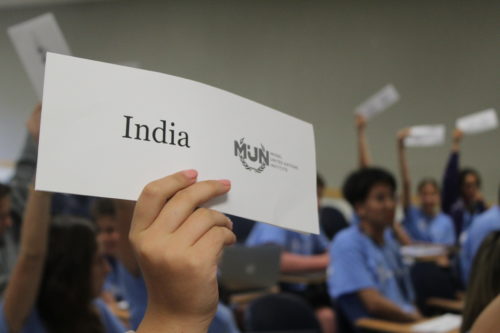I’m a millennial.
As much as it hurts at times to admit my connection to a generation often associated with being difficult to manage at the workplace and having an odd affinity for avocado toast (which I love), I have found the way I approach MUN conferences very conducive to the so-called “stereotypes” of the so-called “millennial generation.”
So, what are the stereotypes?
We are a generation often criticized for being overly idealistic and difficult to manage, but we are also considered to be the ones looking for innovative solutions for existing institutional problems. For example, Brian Chesky challenged the existing structures of hotels through Airbnb. John Zimmer challenged the inefficient organizational system of taxis through Lyft. Daniel Ek found paying $2.00 for an individual song overpriced, and came up with the innovative idea of a mass music streaming service, Spotify. We are a generation which has been able to spot organizational and structural flaws and suggest and implement changes.
How does this rather long preface relate to MUN?
As an advisor, I’ve had the great fortune of being able to work at schools that have provided students with opportunities to visit and attend various conferences around the world. Many of these conferences provided my delegates with extraordinary experiences, but also gave me insights into which conferences tend to do well and which have room for potential improvement. After attending dozens of conferences in numerous cities and countries around the world, I made conclusions about what improvements were needed and what type of trends I noticed in the MUN circuit. This motivated me to start a new conference where the primary purpose of the conference was not for the organizers, but for the delegates.
So, what type of issues did I repeatedly see? And how did we attempt to remedy these issues?
#1 Oversized Committees
This is perhaps the single greatest issue for any large conference. A large committee is simply not helpful for students at all levels. When conferences exceed the size of more than fifty delegates in a room, often the following issues arise:
- The high number of delegates frequently results in a lack of decorum. It is difficult for college students or high school student chairs to manage that number of teens in one room and maintain a high level of decorum. There is a reason why our classrooms in schools have only 15-25 students. When the classroom exceeds a certain size, decorum becomes near impossible to maintain.
The high number of delegates prevents opportunity to speak. MUNers all know the feeling of raising a placard over and over again for fifteen minutes only to be called upon once. This could happen even in a committee with fifteen delegates if all delegates are highly engaged and active. When the number of delegates gets as high as 50+, simple math would tell us that in a competitive conference, speaking time could be potentially limited to a maximum of three times every two hours, assuming most delegates are engaged. Three times in two hours is not enough. This, especially, is painful for me to witness when I am attending an international conference and I see teams who have traveled thousands of miles so their students could only speak two-three times in a two hour period, and only a dozen times in the entirety of the conference.
- The high number of delegates makes effective communication difficult. During an unmoderated caucus (for UNA-USA) or for a lobbying session (for THIMUN) when there are over 50 delegates, the communication is far less purposeful, and often delegates find themselves aligning simply based on the geography of the room. The limit in communication is not limited to unmoderated caucuses. The chairs have difficulty communicating with delegates in general when there are so many in the same room. A major part of MUN is for the delegates to be able to communicate and learn from the chairs – how do we expect any of this learning to happen when the chairs have to oversee so many students at once?
THE SOLUTION
The remedy to this issue is quite simple. Smaller committees! Yes, it comes with a price-tag, fewer delegates does mean less money for a conference to make, but sometimes it’s worth the cost if it means ensuring a quality experience for the delegates. This is a very simple solution for such a serious and pervasive problem.
Click here to read Part 2 of this series, which tackles the issue of Lengthy Conference Schedules!

 The high number of delegates prevents opportunity to speak.
The high number of delegates prevents opportunity to speak.
